City guide: Ji’nan

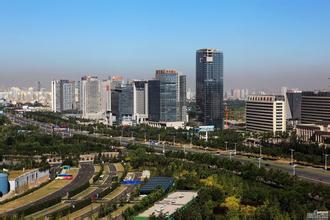
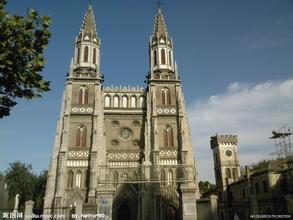

CONTENT
| 1. General introduction | 2. Transportation |
| Location & population | Metro |
| Climate | Railway |
| 3. Education & Health care | 4. Recreation |
| International Schools | Shopping |
| Hospitals | Nightlife |
| Cuisine | |
| Attractions | |
| Expat community |
1. General introduction
The area of present-day Jinan has been inhabited for more than 4000 years. The Neo-
lithic Longshan Culture was first discovered at the Chéngzǐyá (城子崖) site to the
east of Jinan (Zhangqiu City) in 1928. One of the characteristic features of the
Longshan Culture is the intricate wheel-made pottery pieces it produced. Most re-
nowned is the black "egg-shell pottery" with wall thicknesses that can go below 1
millimeter. The area of present-day Jinan has played an important role in the history
of the region from the earliest beginnings of civilization and has evolved into a
major national administrative, economic, and transportation hub.
With a history of over 4,000 years, Jinan is very rich in historical relics, including
the site of the Shun (an ancient tribe leader) culture of the 3rd century BC, the Great
Wall section of the State of Qi, the Simen Stone Pagoda built in the Sui Dynasty, and
the painted sculpture of Arhat in Lingyan Temple which was built in the Song Dynasty
(960-1279).
Jinan is a famous tourist city with mountains, springs, rivers, lakes and ancient cul-
tural relics perfectly combined as one.It has long been famous as “the Spring City”
in China owing to its four springs: Baotu Spring, Heihu (Flying Tiger) Spring, Wulong
(Five Dragon) Spring and Zhenzhu (Pearl) Spring.
In addition, the Thousand-Buddha Mountain, Daming Lake, Red Leaves Valley and Water
Curtain Gorge are wonderful natural scenic spots to explore in Jinan.
Location & population
Jinan is the capital of Shandong province in Eastern China, about 400 km south of
Beijing. As the political, economic and cultural center of Shandong Province, Jinan
is situated in the middle of the west part of Shandong Province with Liaocheng to
the south-west, Dezhou to the north, Zibo to the east and Taian to the south, backing
onto the Yellow River and facing Taishan Mountain, whose topography lowers from south
to north.
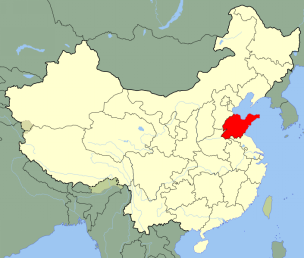
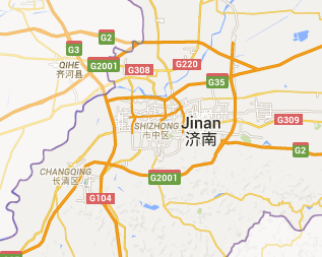
Jinan is the capital of Shandong province in Eastern China, about 400 km south of
Beijing. As the political, economic and cultural center of Shandong Province, Jinan
is situated in the middle of the west part of Shandong Province with Liaocheng to
the south-west, Dezhou to the north, Zibo to the east and Taian to the south,
backing onto the Yellow River and facing Taishan Mountain, whose topography lowers
from south to north.
Climate
Jinan has a humid subtropical with four well-defined seasons. The city is dry and
nearly rainless in spring, hot and rainy in summer, crisp in autumn and dry and cold
(with little snow) in winter. The average annual temperature is 14.70 °C (58.5 °F),
and the annual precipitation is around slightly above 670 millimeters (26.4 in), with
a strong summer maximum, and high variability from year to year. January is the coldest
and driest month, with a mean temperature of −0.4 °C (31.3 °F) and 5.7 millimeters
(0.22 in) of equivalent rainfall. July is the hottest and wettest month.
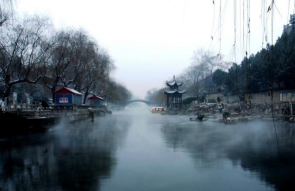
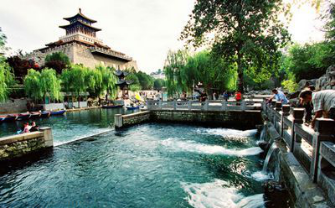
Economy & industry
Jinan has a pool of high-quality labor resources. There are 18 universities and
colleges in the city where more than 200,000 students are studying. Among the
200+ research institutes in the city, 10 are national laboratories.
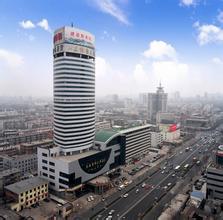
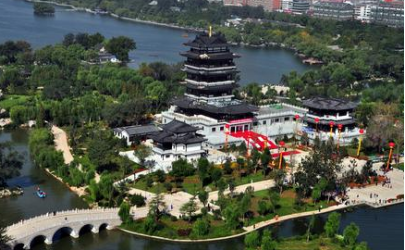
The focus on technology intensive industries has transformed Jinan from a city
supported by heavy industry and textiles to a city with more diverse industrial
structure. Information Technology, transportation tools, home appliances, and
bio-engineered products, among others, have become important components of the
area's industry. Jinan's IT-related economic output was ranked to be in the
fourth place nationally in 2004. It also has multiple industrial zones.
2. Transportation

Jinan's urban public transportation history began in 1938, and the city is now
a major bus transportation hub. To ensure that buses have priority, most of the
city's urban main roads have a bus lane, and Bus rapid transit signal priority
measures are gradually being implemented. The Jinan urban area has more than 220
public transportation routes. The Beijing–Shanghai High-Speed Railway calls at
the new Jinan West Railway Station. Started in 2013, Jinan Metro will open in
2018 and then will be extended to 3 lines toward 2030.
Air
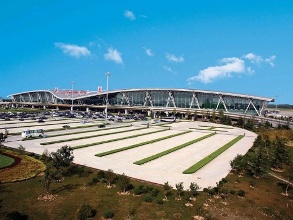
Jinan Yaoqiang International Airport is located about 33 km (21 mi) northeast of
the city center and to the north of the town of Yaoqiang. It connects to both the
Jiqing (Jinan –Qingdao) and Jingfu (Jingfu – Fuzhou) highways, providing very
convenient airport transportation. Covering an area of 230,000 square meters
(about 56.8 acres), it is one of China's finest airports. Notably, it is also the
largest passenger airport in Shandong Province.
Viewed from a distance, the airport appears to be a flying roc, which will surely
arouse your imagination. It has one of the biggest waiting areas in all of China,
which makes it play an important role in the Chinese air industry. Some 54
domestic and international airlines have been opened. Flights originating here
can reach more than 38 cities both in China as well as abroad.
Railways
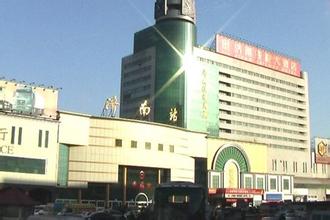
There are three railway stations in the city, Jinan Railway Station, West Railway
Station and East Railway Station. Jinan Railway Station is the largest in Shandong
Province. Railway lines Beijing-Shanghai and Qingdao-Jinan pass and stop here. It
also connects this city with other large cities, such as Shanghai, Guangzhou,
Lianyungang, Xian, Urumqi and Hangzhou, etc. A ticket office is located on the west
side on Floor 1 of the Railway Station. A word of warning: it is a common phenomenon
that during the May Day and National Day Holidays, either air tickets or the train
tickets are in short supply due to huge demand. To ensure your trip for the next
destination or returning home, make a reservation as you enter the city.
3. Education & Health care
International Schools
Hospitals
4. Recreation
Shopping
Shopping is for some a great enjoyment when traveling. Besides visiting the tourist
attractions, you can have the opportunity to purchase souvenirs. As the capital city
of Shandong Province, Jinan is a venue for products from the whole province. In the
malls, souvenir stores or the street stands, you may be sure to find something that
will serve as a pleasant reminder of your visit here.
Quancheng Lu, Daguan Yuan, Renmin Shangchang and the South Gate areas are the four
big commercial districts of the city. Of these, Quancheng Lu is the best place to
go. There are numerous stores on Quancheng Lu including the Guihe Shopping Center,
the city's largest shopping center, the local Department Store, the Xinhua Book
Store as well as stores selling world-famous brand name goods.
Yingxiong Shan Culture Market, located at 46, Ma'an Shan Lu, Shizhong District,
is a large market selling books, antiques, calligraphy works and painting, root
carvings and so on.
Luokou Clothes Market is located in the area between the north of Xiaoqinghe
(Xiaoqing River) and the south of the tieluqiao. It is a market providing the
services of clothes processing, distribution and other related services.
Major Shopping Malls
1. Renmin Shopping Center
Located in the most prosperous city center, Renmin Shopping Center is a large retail
enterprise of Shandong Province. It is the member unit of National Trade Federation
of 10 largest stores.
Chinese name: 人民商场 Renmin Shangchang
Address: 3 Jingsi Road, Shizhong District 市中区经四路3号
2. Silver Plaza
Covering an area of more than 30,000 square meters, Jinan Silver Plaza is a famous
retailing department store. You can buy many brand goods here like clothes, watches,
shoes, glasses, jewelries, cosmetics and so on.
Chenes name: 银座商城 Yinzuo Shangcheng
Address: 15 Yingxio ng Shan Road 济南英雄山路15号
Open: 8:00am-10:00pm
3. Quancheng Square
Quancheng Square mainly sells cheap clothes. Even though it sells the ordinary
clothes, clothes here are fashion. Anyway, you can bargain with the shopkeeper.
Chinese name:泉城广场 Quancheng Guangchang
Address: Liyuan Street, Lixia Area 历下区沥源大街
Computer and Electronic Products
Saibo Digital Products Square
Saibo Digital Products Square mainly sells digital products like camera, computer,
DV and so on. Also, you can buy elements of these digital products here.
Chinese name: 赛博数码广场 Saibo Shuma Guangchang
Address: 178 Shanda Road 济南市山大路178号
Open: 9am - 5:30pm
Book Stores
Jinan Yingxiongshan Cultural Market
It is a place that selling the discount books, and has variety of books, especially
the students' book. Otherwise, many pretty commodities are available there.
Chinese name: 英雄山文化市场 Yingxiong Shan Wenhua Shichang
Address: 46 Ma'an Shan Road 济南市马鞍山路46号
Nightlife
Jinan's nightlife is made up of four basic types. They are the Square Nightlife,
based around Quancheng Square, Food Nightlife, focused on the roadside stands and
outdoor BBQs, Shopping Nightlife, based in department stores, supermarkets and the
markets, and Recreational Nightlife in clubs and dance halls. With the development
of the Jinan economy, karaoke clubs, pubs, bars and coffee shops all over the city
have become popular, especially among young people.
In Jinan, you can have a very relaxing time. Although the nightlife in Jinan is not
well developed, it is still a way for people to relax and make friends after a hard
days work.
According to a recent survey, Jinan's nightlife is made up of four basic types. They
are the Square Nightlife, based around Quancheng Square, Food Nightlife, focused on
the roadside stands and outdoor BBQs, Shopping Nightlife, based in department stores,
supermarkets and the markets, and Recreational Nightlife in clubs and dance halls.
With the development of the Jinan economy, karaoke clubs, pubs, bars and coffee shops
have become popular, especially among young people.
Karaoke clubs (KTV) have now been accepted by most people as a means of escaping the
heavy work pressures of modern city life, singing freely in the KTV clubs is a great
escape. A Mi Guo and Hao Le Di are two KTV clubs and in these places, you can see
huge photos of famous stars' on the wall and also enjoy the free buffet.
Cuisine
Jinan has its own cuisine, the Jinan style of the Lu cuisine (Simplified Chinese:
鲁菜/ Traditional Chinese: 魯菜; pinyin: Lǔcài), one of the Eight Culinary Traditions
of China. One of its features is the use of soup in its dishes. Modern cuisines in
northern China —Beijing, Tianjin and the northeastern regions including Heilong-
jiang, Jilin and Liaoning— are all branches of Shandong cuisine.
Jinan cuisine is famous for its scrumptious, aromatic, fresh and pure dishes. The
methods of cooking employed in the preparation of these local foods include deep-
frying, grilling, frying and stir-frying but the food is non-greasy. Nutritious
soup is an important feature of Jinan cuisine while shallot and garlic are widely
used to create delicious flavors. Tang Cu Li Yu (Sweet and Sour Carp), Jiu Zhuan
Da Chang (Fried Pork Chitterlings) and Jinan Roast Duck are very popular local
delicacies.
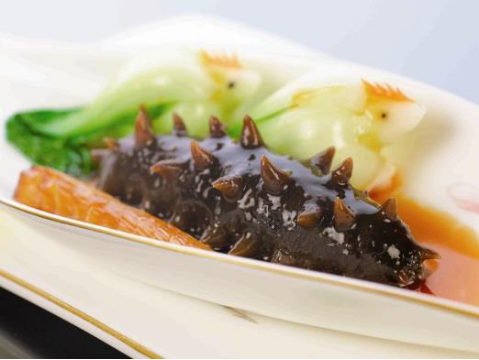
Attractions
Jinan is renowned across China for its numerous springs, the lakes fed by the
spring water, and the weeping willows that grow along the water edges. Jinan
was also the historical center of Buddhist culture for the whole province which
is still manifest in the many historic sites that are left behind in its southern
counties.

The Shandong Provincial Museum located at the foothill of Thousand-Buddha Mountain
is the largest museum in the province. It has a large collection of natural as well
as historical treasures from the whole province. The museum was established in its
present form in 1982 and currently has 8 exhibition halls: "Treasures of Shandong
Province"; "Stone Sculptures"; "Warship of the Ming dynasty"; "Ancient Coins"; "Art
Treasures"; "Fossil Collections"; "Dinosaurs"; and "Specimens". The museum has more
than 210,000 relics and specimens, making up ⅓ of the collections in museums of
whole province. The Shandong Provincial Museum has been ranked No. 7 in terms of
collection size among the museums of China.
Baotu Spring Park
Beautiful Baotu Spring Park is located in the centre of Jinan City, and it is here
that you will find the Baotu Spring. In the past, the Baotu Spring only covered 4
mu (about two thirds of an acre). The park itself was originally established in
1956 and more recently has been extended to 158 mu (about 26 acres). This highly
valued facility represents the symbol of Jinan City and is regarded as one of the
three major places of interest in Jinan. This park is highly regarded as a well
known scenic spot which makes an ideal location for admirers of wonderful natural
springs, culture and various constructions.
Daming Lake Park
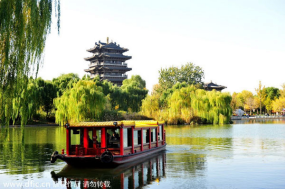
Located in the center of Jinan City, Daming Lake Park is regarded as one of the
three must-see spots in Jinan (the others are Baotu Spring Park and Thousand-Buddha
Mountain). The park is famous for Daming Lake (also known as the Lake of Great
Light) which is a natural lake formed from many springs. Characteristically unique
is its constant water level, unaffected by heavy rains or drought.
Thousand-Buddha Mountain (Qianfo Shan)
Lying 2.5 kilometers (1.55 miles) to the south of Jinan, Shandong Province, the
Thousand-Buddha Mountain (Qianfo Shan) is one of the key points of interest in
the city of Jinan. It is about 258 meters high (846 feet) ranging from east to
west. It has been constructed into a park in1959 which occupies an area of about
166 hectare (140 acres).
The mountain was called Mt. Li in ancient times. However, in the early days of
Sui Dynasty (581-618) a great many statues of Buddha were chiseled on the rocks
of the mountain and the Thousand-Buddha Temple was built and soon became famous,
so the name of the temple was to become that of the mountain. There are many
scenic spots and historical relics distributed in the mountain. You can enjoy
the beautiful sceneries all along the way wandering up either by foot or by bus.
Shandong Provincial Museum
Featuring some 100,000 historical relics, 8,000 specimens and a collection of
120,000 books the Shandong Provincial Museum presents natural and historical
treasures from the prehistoric Dawenkou and Longshan Cultures and the Qi Lu
Culture. The latter having been the culmination of the cultural fusion of Qi
and Lu states established by the Zhou Dynasty and lasting until the Qin and
Han – Ming and Qing Dynasties.
More information on www.travelchinaguide.com/attraction/shandong/jinan
and www.chinahighlights.com/jinan/attraction
- Address:Intersection of Shungeng Rd and second Ring south Rd, Shizhong District
- Address:second Ring south Rd and Yangguang Xin Rd, Shizhong district
- Name:Mingshi Haoting名士豪庭Address:No.12372, Jingshi Rd, Lixia District
- Name:Lishan Manor 历山名郡Address: No.14, Culture West Rd, Lixia District
- Name:Sports Garden体育佳苑Address:No.10, Culture West Rd, Lixia District
